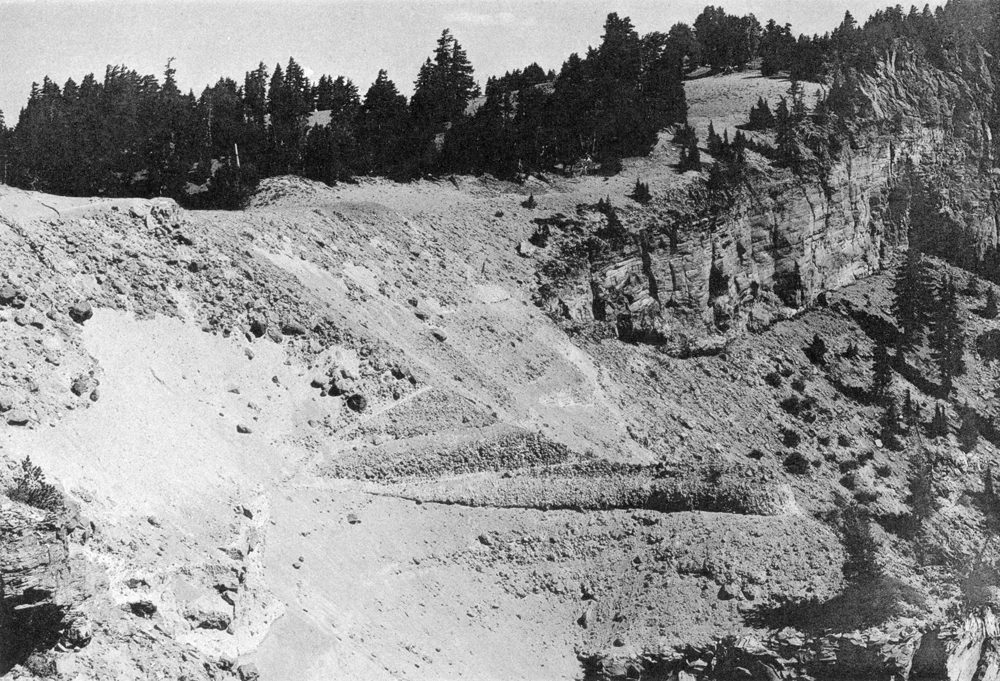Whereas the basal layer and the crust of the Llao dacite consist chiefly of dense, black obsidian, the bulk of the flow consists of paler, streaky glass which is extremely vesicular and locally almost pumiceous. The rapid alternation of light and dark, that is, of more and less vesicular layers, seems to reflect an unequal concentration of gas within the rising magma.
Reference should be made, in conclusion, to the glacial deposits beneath the lava on the caldera walls. Along the east side of the old valley down which the lava flowed, glacial deposits are absent. The dacite there rests on the coarse lump pumice blown out during the blasting of the vent. Under the west “wing,” on the contrary, the lava rests on glacial moraines and fluvioglacial sands (see plate 12, figure 2). Close to the edge of the flow, these deposits approximate 100 feet in thickness and contain much reassorted pumice. Toward the vent they thin, and finally, a short distance down the side of the old valley, they disappear. Striated boulders, up to 18 inches across, occur just below the lava, and occasionally one may find erratics partly embedded in the obsidian, their crusts reddened by heat and escaping gases.
|
Plate 12. Fig. 2. West edge of the Llao Rock flow. Immediately under the flow, but almost entirely concealed by talus, is a layer of glacial debris. Coarse, bouldery glacial till also overlies the low margin of the flow and extends thence to the left, increasing in thickness. Near the center of the picture, this younger till is seen resting unconformably on dacitic lump pumice. This rests in turn on another layer of till, under which, at the bottom right corner, is a glaciated flow of andesite. (Photograph by George Grant, National Park Service.) |
***previous*** — ***next***


